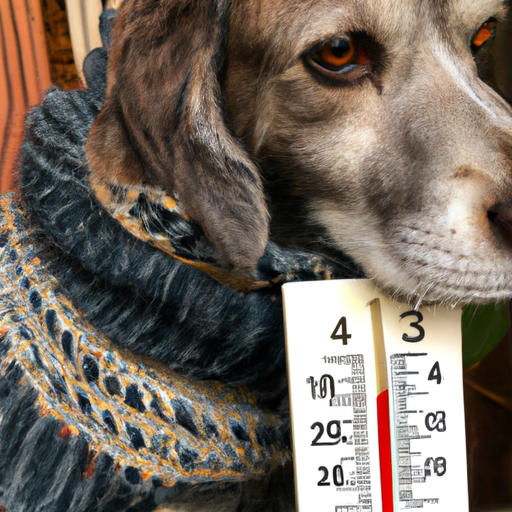As a caregiver, you always want to ensure the comfort and safety of your furry friend. While dogs are naturally built to withstand different weather conditions, extreme temperatures can still pose a threat to their health. Here, you’ll learn the specifics about what temperature is too cold for dogs.
H2: Understanding Your Dog’s Cold Tolerance
Understanding your dog’s cold tolerance is key in determining what temperature is too cold for them. This tolerance varies significantly across different breeds, sizes, and health conditions.
For instance, smaller breeds and dogs with thin coats tend to have lower cold tolerance. Older dogs or those with health issues may also be more susceptible to cold temperatures.
Here are some factors to consider:
- Breed: Some breeds like Huskies and Bernese Mountain Dogs are naturally acclimated to cold weather.
- Size and Weight: Larger dogs with more body fat and a dense coat usually tolerate cold better than smaller ones.
- Age and Health: Puppies, older dogs, and dogs with health issues may have a harder time regulating body temperature.
H2: Identifying Potentially Dangerous Temperatures
As a general rule, temperatures below 45°F (7°C) start to become uncomfortable for most dogs. When the temperature drops below 32°F (0°C), smaller, older, or less hearty breeds might begin to feel cold.
| Temperature | Risk Level |
|---|---|
| Above 45°F (7°C) | Safe |
| Below 45°F (7°C) | Low risk |
| Below 32°F (0°C) | Moderate risk |
| Below 20°F (-6°C) | High risk |
Please note that these are just general guidelines. Always pay attention to your dog’s behavior in cold weather to identify signs of discomfort or distress.
H2: Protecting Your Dog in Cold Weather
Now that you know what temperatures might be dangerous for your dog, let’s discuss how to protect them.
- Limit Outdoor Time: When it’s very cold, limit your dog’s time outside. Shorter, more frequent walks are better than long ones.
- Dress Them Appropriately: Consider doggy sweaters or booties, especially for smaller, older, or thin-coated dogs.
- Provide Shelter: If your dog spends significant time outside, ensure they have a warm, dry shelter.
- Check Their Paws: Ice, snow, and salt can cause issues with your dog’s paws. Check and clean them regularly.
H2: Recognizing Hypothermia in Dogs
Hypothermia is a real threat in freezing temperatures. Knowing the signs can save your dog’s life:
- Excessive shivering
- Lethargy
- Frostbite (skin turns pale or blue)
- Difficulty breathing
- Loss of coordination
If you suspect your dog has hypothermia, immediately warm them up and consult a vet.
FAQ
Q: Are certain breeds more resistant to cold?
A: Yes, breeds like the Siberian Husky, Bernese Mountain Dog, and Alaskan Malamute are generally more resistant to cold.
Q: How can I tell if my dog is too cold?
A: Look for signs like shivering, whining, slowing down, and looking anxious.
Q: What should I do if my dog is cold?
A: Bring them inside right away. Warm them up with blankets and consider using a dog sweater.
Q: Can dogs sleep outside in the cold?
A: It’s not recommended, especially in freezing temperatures. If your dog must be outside, ensure they have a warm, insulated shelter.
Being aware of the temperature and your dog’s comfort can make all the difference in keeping them safe and happy during the cold months. Always remember, if it’s too cold for you, it’s probably too cold for your dog.



